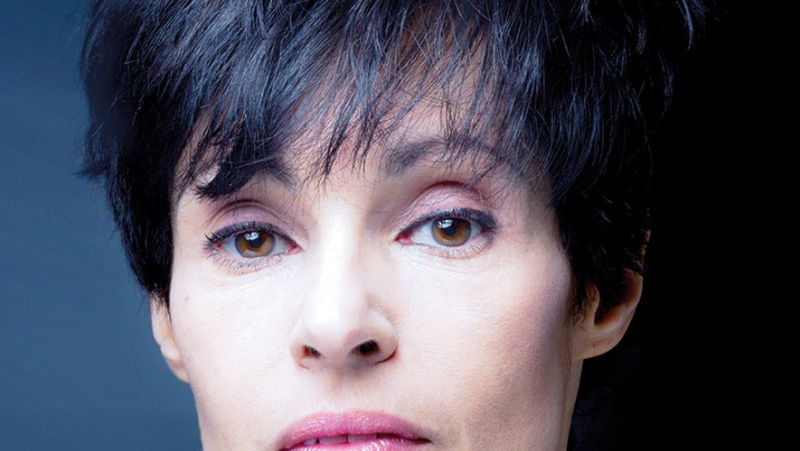“I always found it to be quite a violent story”, Marie-Claude Pietragalla choreographs Giselle(s) at the Corum in Montpellier


Marie-Claude Pietragalla s’empare de Giselle, ballet romantique pour mettre en scène les violences faites aux femmes et questionner la rédemption par l’amour ? – PASCAL ELLIOTT
The dancer and choreographer uses 19th century romantic ballet to question this story of betrayed love with a contemporary filter. A first act condemns the women to domestic violence, while in the second act, they revolt and free themselves like "Amazons".
In the classic ballet of Giselle, who is over 180 years old, the heroine loses her reason and dies. An outcome that we found in many stories at the time. You give a completely different version by introducing violence against women?
The Giselleromantic, it is indeed a young woman who falls in love with a young man whom she thinks is of her peasant condition. In the end, she discovers the deception. She is very in love with him, but realizes that he is a prince. She loses her mind and dies. The first act which establishes the story is the betrayal by love. And death by love. Our Giselle(s), with Julien Derouault, is almost the sequel to Giselle, except that she is with « s ». Through this betrayal of love, we do not follow one Giselle but several young women. We follow their married lives and the violence that results from it because we are faced with couples who are made and broken, are under the influence. We realize that there is psychological and physical violence. These are therefore four couples that we will follow during the first act, through the eyes of the character that I play. This is the Giselle of the 19th century who comes to haunt the contemporary world and who questions the condition of women. She realizes that it is not as she experienced it, an opposition of two distinct classes, but domestic violence, which leads to death, is in all social environments of our contemporary time .
The 1st act is therefore intended to be concrete ?
It’s a real act that happens in the world of the living. My character, who is this Giselle who has spanned the ages, questions the condition of women in the contemporary world. She makes an incursion, and through what she sees, the viewer is taken into different stories of couples where the end result is that domestic violence leads to the death of these young women.
In the second act, we see strong women who revolt ?
The character I play will in the second act assemble an army of Wilis who are no longer 19th century romantics but are Amazon warriors. In the 2nd act, it is the revolt of women across a world which remains a surrealist world. These Wilis emerge from their graves in the evening and will haunt their executioners. We ask the question of whether there is redemption through love or will these women be uncompromising as their spouses were in the first act?
You know this ballet Giselle well, having often performed it. It’was a must ?
Yes. Every dancer who works in ballet dreams of one day performing this role which is emblematic of the 19th century, a romantic role. There is another version that I had the chance to dance, that of Mats Ek. It’s a Giselle revisited which places its protagonists in the second act in a psychiatric hospital. Giselle, I always found it to be quite a violent story
Dance no longer has anything to do with what you knew. You offer a necessarily contemporary form ?
I release the bodies in the second act since they are Wilis who are bare-legged, barefoot, with a dance very anchored in the ground, very rhythmic. There is a whole musical work that keeps the score of Adolphe Adam. But through the interventions that I make in the first act, through the dance itself, the choreography, there is a whole mixture of music, with the drums of the Bronx, electro music, with work on the voices taken live, on the breath, the song. This is obviously a very contemporary vision of this story of betrayed love.
There is the expression of a sorority. These women really stick together.
Absolutely. We felt it from the first rehearsals that we were one body together. We try to breathe in unison, to have the same energy, even though the paths are different. They all died with a different relationship story. But they are linked together by this idea of justice and revenge.
There is also music and light, to make it a total spectacle ?
We wanted to work with automatic, color-saturated lights. There is a lot of work that is done on this show that almost brings the light to be a character in its own right.
We know the impact of Judith Godrèche's declarations on the world of cinema. Is the professional world of dance concerned by these problems of creators who go beyond the limits??
I don't know. The actors and actresses are in the desire of the directors. Whereas the dance is still very structured. But to say that it doesn’t exist in dance would be false. I was not a witness to it but obviously there were abuses of power. But what is most terrible about Judith Godrèche's testimony is that everyone knew it and no one said anything.
Sunday March 24 at 6 p.m. (full). A new date is scheduled for Sunday February 9, 2025. Corum, Salle Berlioz, Montpellier. Price: 47 to 67 euros.




